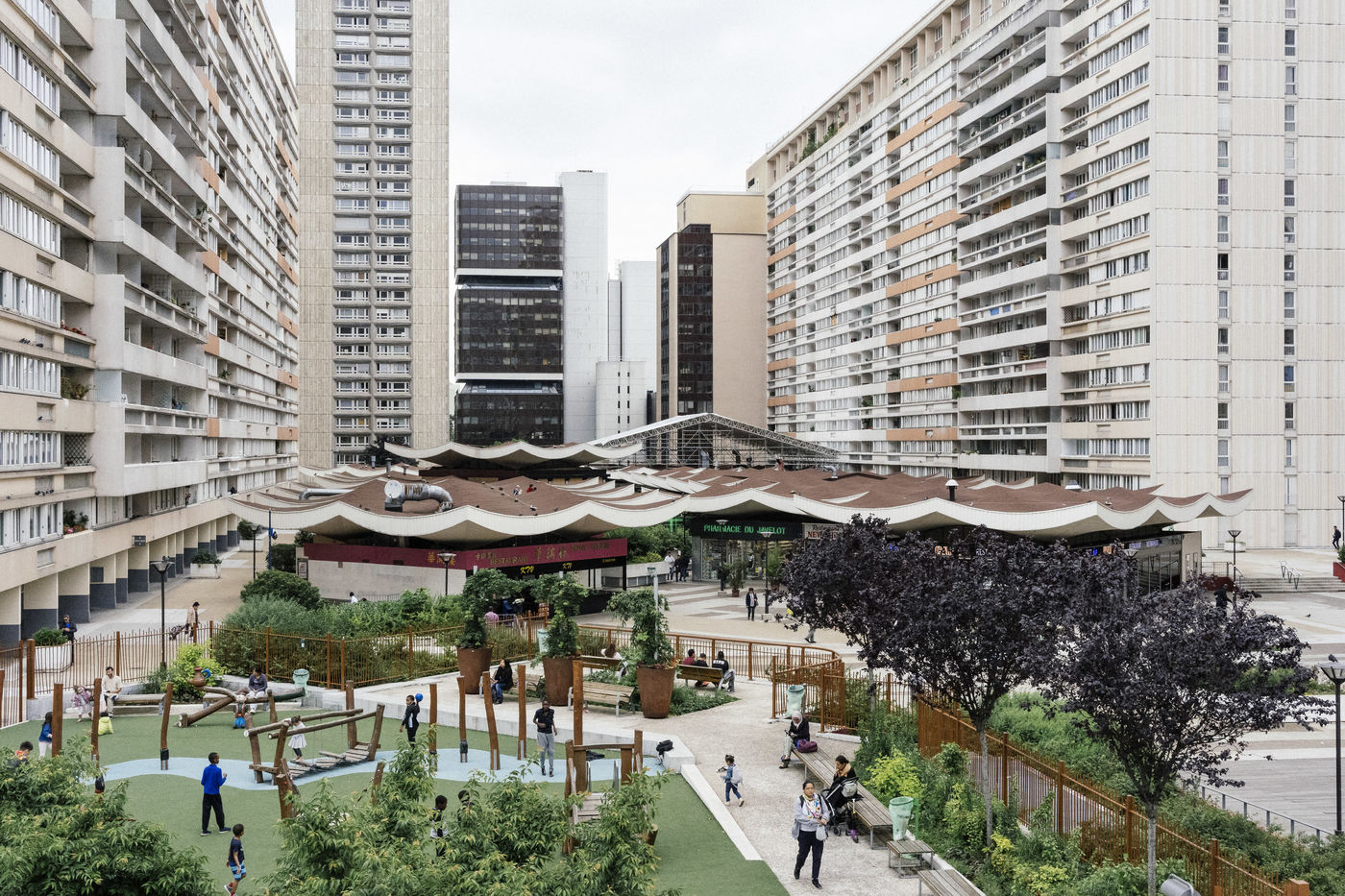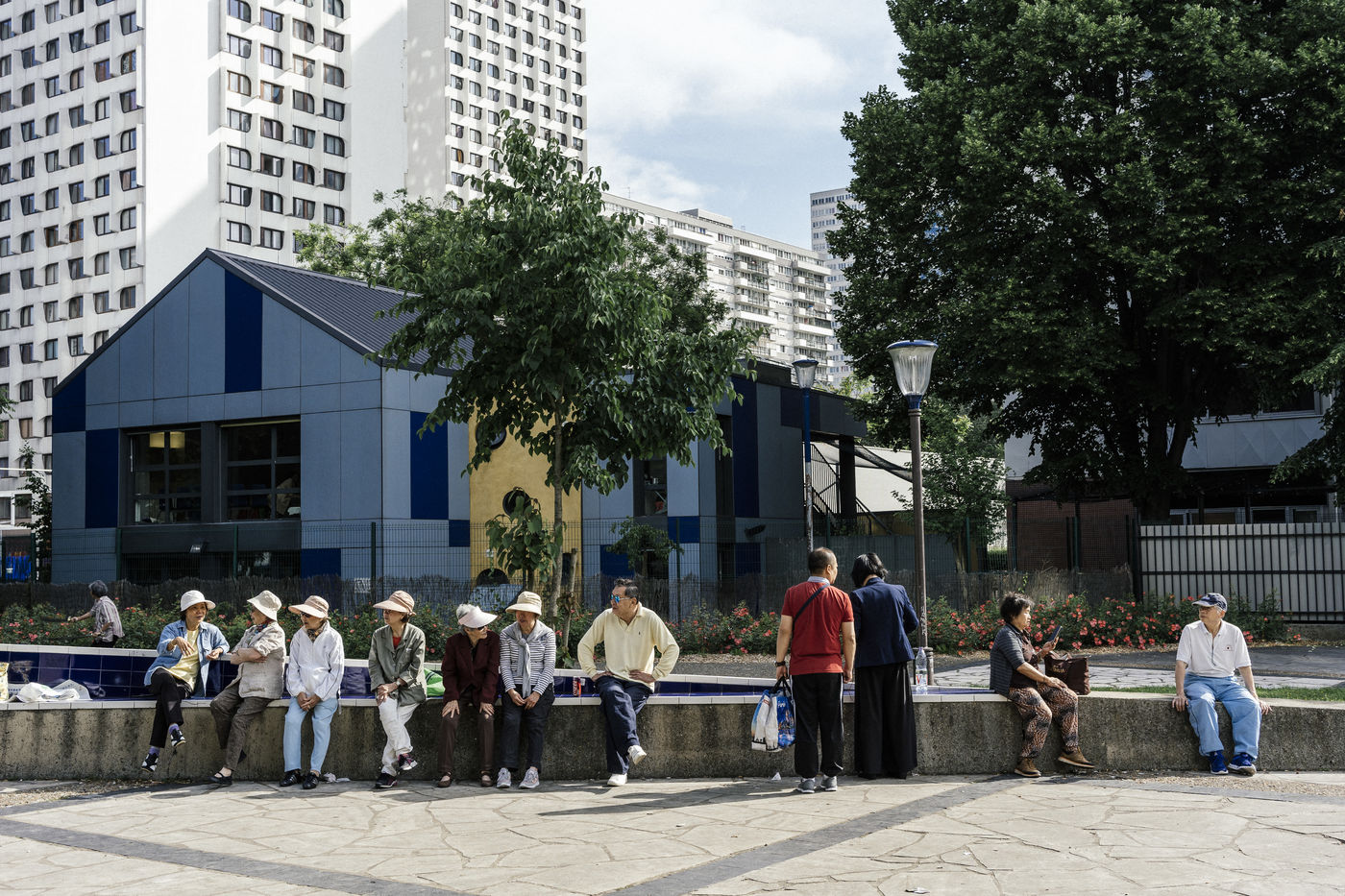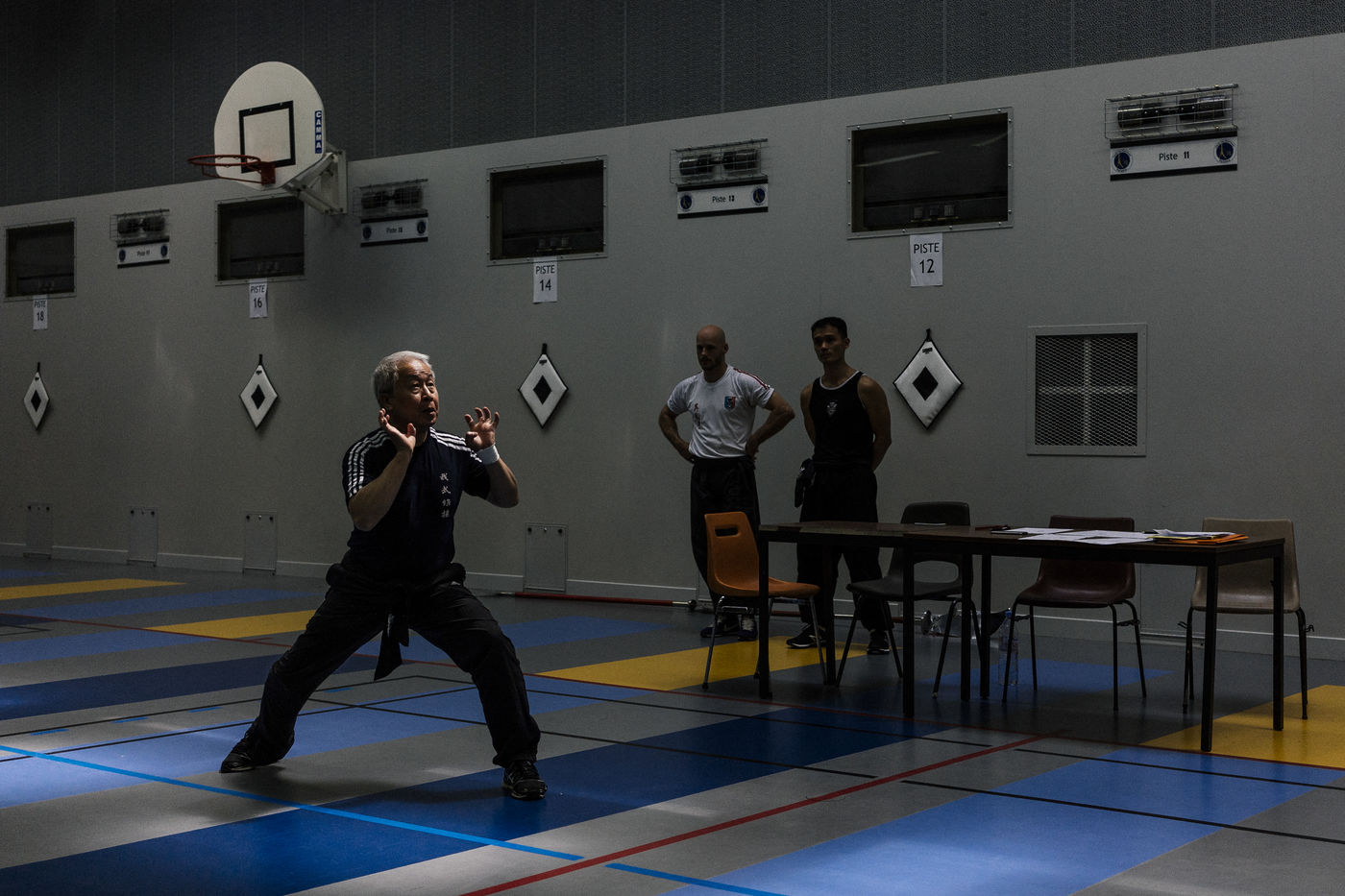Pour accéder à la série en entier, vous devez vous logger ou demander un compte Hans Lucas en cliquant ici.
Olympiades, d'une verticalité l'autre
«Aujourd'hui, le quartier Italie vit cette merveilleuse aventure d'une cité qui s'invente un espace, une lumière qui trouve sa voie vers le ciel... espace pour exprimer sa liberté, espace pour l'espace. Pour la première fois, on ne rénove pas, on crée. Voici Paris tel que vous n'osiez plus le désirer. Le Paris tel qu'il fallait l'imaginer et le réaliser. Voici la première «cité tous loisirs». Car les Olympiades s'est donné un coeur, une profonde et vibrante raison d'être... que nous aurions pu appeler planète, chrysalide, Colisée».
Voilà ce qui s'écrivait à l'époque dans la brochure de présentation d'un nouveau quartier du XIIIème arrondissement de Paris.
Plus vaste entreprise d'urbanisme depuis les grands travaux d'Haussmann dont les composantes urbaines, politiques et sociales auront marqué les esprits, ce projet a mis sur le devant de la scène parisienne la question de l'architecture verticale sur dalle pour replacer le tissu urbain historique.
Mexico, Sapporo, Athènes, Cortina, Tokyo, Helsinki, Rome, Squaw Valley, Anvers, Grenoble et Londres... les immeubles portent les noms de villes ayant accueilli les jeux Olympiques. L'originalité des Olympiades réside dans l'insertion de ce micro-quartier dans le grand ensemble du quartier chinois du triangle de Choisy.
La diversité de l'offre résidentielle du projet promettait une forme de mixité sociale. Il semble qu'il y ait eu dérive entre conception et exécution du projet. La dalle piétonne envisagée comme une promenade plantée est devenue une sorte d'îlot isolé difficilement intégral dans la vie du quartier et donnant à l'ensemble un aspect de forteresse.
Dans cet « urbanisme de haute densité », la tour perd son statut de monument exceptionnel pour devenir un objet de série. Dans ce secteur Italie, les Olympiades sont l'incarnation la plus emblématique de cette posture théorique.
Au coeur de l'ultra-moderne solitude des architectures urbaines, il semblerait que la dalle des Olympiades, malgré ses plus de quarante ans, n'ait pas encore trouvé son équilibre alors que s'annoncent de nouveaux projets d'équipements publics, services de proximité et espaces verts.
Olympiads, from one verticality to the other
"Today, the Italian quarter is living this wonderful adventure of a city that is inventing a space, a light that finds its way to the sky... space to express its freedom, space for space. For the first time, we are not renovating, we are creating. Here is Paris as you no longer dared to want it. Paris as it should have been imagined and realized. This is the first "leisure city". For the Olympiads have given themselves a heart, a deep and vibrant raison d'être... that we could have called planet, chrysalis, Colosseum".
This was written at the time in the brochure presenting a new district in the 13th arrondissement of Paris.
The largest urban planning company since Haussmann's major works, whose urban, political and social components have left their mark on people's minds, this project has brought to the forefront of the Parisian scene the question of vertical architecture on slabs to replace the historic urban fabric.
Mexico City, Sapporo, Athens, Cortina, Tokyo, Helsinki, Rome, Squaw Valley, Antwerp, Grenoble and London... the buildings bear the names of the cities that hosted the Olympic Games. The originality of the Olympics lies in the fact that this micro-district is part of the large Chinese district of the Choisy triangle. The diversity of the project's residential offer promised a form of social mix. There appears to have been a drift between project design and implementation. The pedestrian slab, considered as a planted promenade, has become a kind of isolated island that is difficult to integrate into the life of the district and gives the whole an aspect of a fortress. In this "high-density urban planning", the tower lost its status as an exceptional monument to become an object of series. In this Italian sector, the Olympics are the most emblematic embodiment of this theoretical posture.
In the heart of the ultra-modern solitude of urban architecture, it would seem that the Olympiad slab, despite its more than forty years of existence, has not yet found its balance as new projects for public facilities, local services and green spaces are announced.









